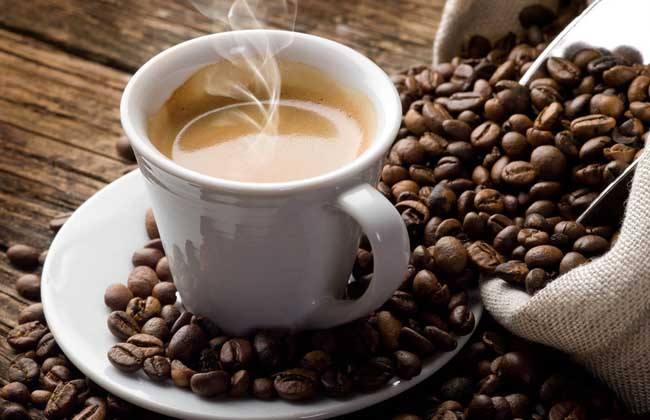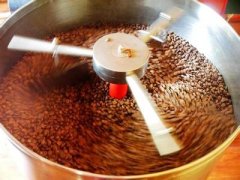Introduction to the steps of using several common coffee brewing utensils

Common coffee making utensils:
1. French pressure kettle
The principle of using the pressure pot to make coffee: the essence of coffee is released by soaking and stewing through the full contact between water and coffee powder.
Suitable for coffee: coffee powder with both strong and light taste
Degree of grinding: coarse granule.

Use steps
1. Warm the filter kettle and coffee cup with hot water.
two。 Pull out the filter group of the filter kettle. Pour out the water from the filter kettle and put about 20 grams of coffee powder in the kettle.
3. Put the filter kettle at an oblique angle of 45 degrees, slowly pour in the hot water of 200ml, about 95 degrees, and rest for 4 minutes.
4. Stir the coffee powder with a bamboo stick to float the coffee oil to the top.
5. Put on the filter group, gently press to the end, and then pour the coffee into a warm coffee cup.
6. Whether you add milk or sugar you like, a cup of freshly ground coffee can be born in this way!
Name
Place of Origin
Recommendation strength
BMW (Pear horse)
Japan
Strong
Bolton (Bodum)
Denmark
Strong
Harrio (Hario)
Japan
Strong
Like a good ZOICHI
Japan
Strong
Tiamo
Taiwan
Strong
Starbucks (STAR BUCKS)
America
Medium
Yami (YAMI)
Taiwan
Medium
OSAMA
Taiwan
Medium
MUJI (MUJI)
Japan
Medium
Second, hand-brewed coffee
Because the coffee made by hand brewing maximizes the original flavor of the coffee, the grade of the beans used is higher (the coffee extracted by low-grade beans in this way will be difficult to taste), and the coffee produced is considered to be fine coffee.

First of all, you need to prepare tools, including hand pots, filter cups, filter paper, beakers, and thermometers.
Second: filter coffee is extracted with hot water, so boil a pot of hot water in advance, pour the water into the hand pot (it is better to use a crane mouth pot with a smaller outlet, so that it is easier to control the thickness of the flow), then pour hot water into the beaker to warm the cup (which is also to adjust the water temperature) and then use a thermometer to measure the water temperature, generally the water temperature is between 85 ℃ and 92 ℃.
Third: pour the ground coffee powder into the filter paper and put it into the filter cup (generally use 12g powder to make a cup of coffee, and then increase the amount of powder by 8g for each additional person), and put the filter cup on the beaker.
Fourth: start extraction. First, a small amount of water is injected into the coffee powder to soak the coffee powder, a process called steaming to help extract the coffee essence. After stuffy steaming, the second water injection should be fine and uniform, and water should be injected in the way of drawing a circle on the powder surface, which accounts for 60% of the total extraction. The amount of water injected for the third time accounts for 30% of the total extraction amount, and the fourth water injection accounts for 10% of the extraction amount (some people think that the fourth water injection can be omitted and the third water injection can be increased by 10%).
Fifth: remove the filter cup from the top of the beaker, the cup is the extracted coffee. Just throw away the coffee grounds in the rest of the filter paper.
The whole process is very simple, the most important thing is whether the water injection is uniform, and the control of the amount of water injection.
American drip coffee machine
The drip coffee machine is also called atmospheric coffee machine, because the pressure of the water when brewing coffee is an atmospheric pressure. Drip coffee machine is a classic drip filter. Simple, efficient, reliable, most suitable for family, office and dormitory use.
How to use the drip coffee maker at home: preheat the coffee maker before making coffee every day, add half a pot of water to the sink and turn on the power.
1. Pour out the stale water in the machine.
two。 Clean the pipes of the boiler and cooking system.
3. Wash coffee and make funnel.
4. Preheat the coffee pot.
Put a matching piece of filter paper in the funnel of the coffee machine, put it into the filter paper according to 7ml / 9g coffee powder per cup (be careful that the coffee powder enters the filter paper and the wall of the funnel), and close the funnel door. Press 175 ml per cup of coffee to add to the sink and turn on the power.
It is best to use filtered water to brew coffee, especially not chlorinated water. If tap water is used, water purifier and activated carbon filter can also avoid impurities and odors in the water.
IV. Siphon kettle
Siphon pot (Syphon), commonly known as "plug wind pot" or "siphon", is a simple and easy-to-use method of coffee brewing, and it is also one of the most popular coffee brewing methods in cafes. Although the siphon kettle has the nickname of "plug wind type", it has nothing to do with the siphon principle, but uses water heating to produce water vapor, causing thermal expansion and cold contraction, pushing the hot water from the lower sphere to the upper pot, and then sucking back the water from the upper pot after the lower pot cools. Does that sound mysterious? Not at all. Follow the following steps and you will understand!
Prepare supplies
A set of siphon pots, industrial alcohol, lighters, bamboo spoons for mixing, dry wet rags.
Process
1. Load the water-hook the filter element
Fill the pot with hot water and mark it with the "two cups" icon. Put the filter element into the pot, hold the end of the chain with your hand, and gently hook it to the end of the glass tube. Be careful not to release the hook suddenly, so as not to damage the glass tube of the upper pot.
2. Ignite-insert the pot diagonally-wait for big bubbles
Light the alcohol lamp and insert the upper pot obliquely so that the rubber edge is pressed against the spout of the next pot (rest assured that the upper pot will not fall off) so that the chain is soaked in the water. Then boil the water and wait for the pot to produce continuous bubbles. Just put the upper pot diagonally, don't let it clog the next pot, small bubbles don't count, wait for big bubbles to appear.
3. Upright-insert into the upper pot
When large bubbles appear continuously in the lower pot, straighten the upper pot, shake it left and right and press it down slightly so that it is gently stuffed into the lower pot. After the upper pot is plugged in, you can see that the water in the next pot begins to climb up. If you have a bean grinder, you can start grinding beans now! Two cups of water use a medium grinding scale of three spoonfuls of coffee (about 24g)
4. Let the water in the lower pot rise completely to the upper pot
After the water has completely risen to the pot, don't worry, wait a few seconds, and then prepare to pour in the coffee powder after the bubbles in the pot decrease a little.
5. Pour in the coffee powder-stir (left and right)
Pour in the ground coffee powder and move it around with a bamboo spoon to evenly remove the coffee powder into the water. The timing starts at the same time as the first stirring.
Stir gently to avoid violent stirring. If it is fresh coffee powder, it will float on the surface to form a layer of powder. At this time, the coffee powder needs to be stirred so that the flavor of the coffee can be completely extracted. The correct stirring action is to move the bamboo spoon in the left and right direction, with a "strong way" of downward pressure, to "press" the coffee powder floating on the surface of the water below the surface.
6. Stir twice more-flameout
After the first stirring, time 30 seconds, make the second stirring, and then time 20 seconds for the final stirring-- the alcohol lamp can be removed. Take the pre-prepared (wrung-dry) slightly wet dishcloth and gently wrap the side of the lower pot from the side to prevent the wet cloth from touching the place where the alcohol flame at the bottom of the pot comes into contact, so as to prevent the pot from breaking. At this time, you can see that the water in the upper pot is quickly "pulled" to the lower pot. If your coffee is fresh enough, there will be a lot of light brown foam in the pot.
7. Finish
After the coffee is sucked into the lower pot, hold the upper pot in one hand and the handle of the lower pot in the other, gently shake the upper pot to the left and right to pull out the upper pot and the lower pot. Pour the coffee into a warm coffee cup and enjoy the mellow coffee that you have prepared by hand.
5. Mocha pot
Mocha pot (Moka Pot) is a tool for extracting espresso, which is widely used in Europe and Latin American countries, and is called "Italian trickle filter pot" in the United States.
The mocha pot has a two-layer structure, and when the water in the lower part is boiled, it is sprayed into the upper half of the pot through a mesh filter containing coffee powder. Although hot water can be injected into finely ground coffee powder without air pressure, this is not strictly a concentrated extraction, but rather close to dripping, but the coffee made by the mocha pot still has the concentration and flavor of Italian coffee Espresso.
water
The water level is 0.5 cm below the safety valve, and the safety valve will automatically relieve pressure when the lower pot pressure is too high to prevent safety accidents.
Add water to the mocha kettle, if the water level is higher than the safety valve, the function of the safety valve will not function normally. Warm water can also be used to reduce heating time.
Add coffee powder
The use of medium and fine-grained coffee powder, when installed, properly vibrate the powder trough to make the coffee powder evenly distributed.
After filling, gently press the surface with your fingers to make the coffee powder denser.
Tighten
Install the upper and lower parts of the mocha pot together.
Heating
It usually takes about 5 minutes to heat, but be careful not to overheat the coffee powder to produce scorched paste taste.
Enjoy
The types of coffee that need to use a mocha pot are: mocha Coffee, Black Coffee, Italian Coffee, Yega Chevy Coffee.
Italian steam coffee machine
The principle of Italian coffee machine is to use a mixture of high-pressure steam and water to quickly pass through the coffee layer and instantly extract the coffee, so that the coffee temperature is very high, the content of caffeine and other impurities is very low, and the taste is rich.
It is usually equipped with a boiler to produce hot water, which is pressurized to about 9 atmospheric pressure and then flows through the powdered coffee beans in a metal filter to brew coffee. The coffee brewed by this pressurized hot water is thicker than usual and has emulsified fat. It is often called espresso or espresso. There are many kinds of Italian coffee machines. For general commercial use, the most common ones are single boilers, and then there are double boilers and multiple boilers. Of course, the price also becomes more expensive, in addition to the general electronic control switch, there is also a pull-out Italian coffee machine, each has its own advantages.
Advantages
According to the rigorous working method, can make high-quality Italian coffee with strong export feeling; fully functional, you can make a lot of fancy coffee.
Shortcoming
The price is expensive, the price of commercial Italian coffee machine will even be as high as 100,000, and the price of household Italian automatic Starbucks is generally higher, about 10,000 yuan.
Important Notice :
前街咖啡 FrontStreet Coffee has moved to new addredd:
FrontStreet Coffee Address: 315,Donghua East Road,GuangZhou
Tel:020 38364473
- Prev

How to make the perfect espresso
1. Choose coffee beans if you don't have high-quality coffee beans, you will never make a good cup of espresso, no matter how you fix it. Remember, just buy the best beans and grind the beans carefully before making coffee. Some coffee bean packages are marked with the date of baking, and some even mark the date of picking coffee beans, so that it can be confirmed.
- Next

The meaning of coffee bean roasting and the common types of coffee bean roaster
The so-called coffee roasting refers to the heating of raw beans to promote a series of physical and chemical reactions inside and outside of coffee beans, and in this process to produce a variety of sour, bitter, sweet and other flavors of coffee, forming mellowness and tone, and converting raw beans into dark brown beans. Among the factors that affect the taste of a cup of coffee, raw beans account for 60%, roasting accounts for 30%, and extraction accounts for 10%. Okay, baking can make
Related
- What is the Philharmonic pressure? How to use Philharmonic pressure to make delicious coffee
- Why does a hand grinder have more fine powder than an electric grinder?
- In addition to the hot mom, what is the difference between the versions of EK43 | ditting and Mahdi ek43?
- What kind of equipment do you need to make coffee by hand? Introduction to novice starter cooking equipment tools
- Espresso needs to be ground how thick and thin scale entry Italian Coffee Machine Bean Grinder investigation and Grinding course
- How much does it cost to open a small private cafe? How much does it cost to learn coffee? How to operate it?
- The difference between the flavor characteristics of hand-brewed coffee and coffee maker is hand-brewed coffee really better than coffee maker? Can I use a coffee machine to make coffee beans by hand?
- The difference between 01 and 02 of hario v60 filter cup what is the difference between 01 and 02 filter cup opening and cooking flavor
- What's the difference between the smart cup and the French kettle? Which is better, the French kettle or the Smart Cup?
- What's the difference between a smart cup and a V60 filter cup? The difference between the taste of smart cup and hand-brewed coffee

